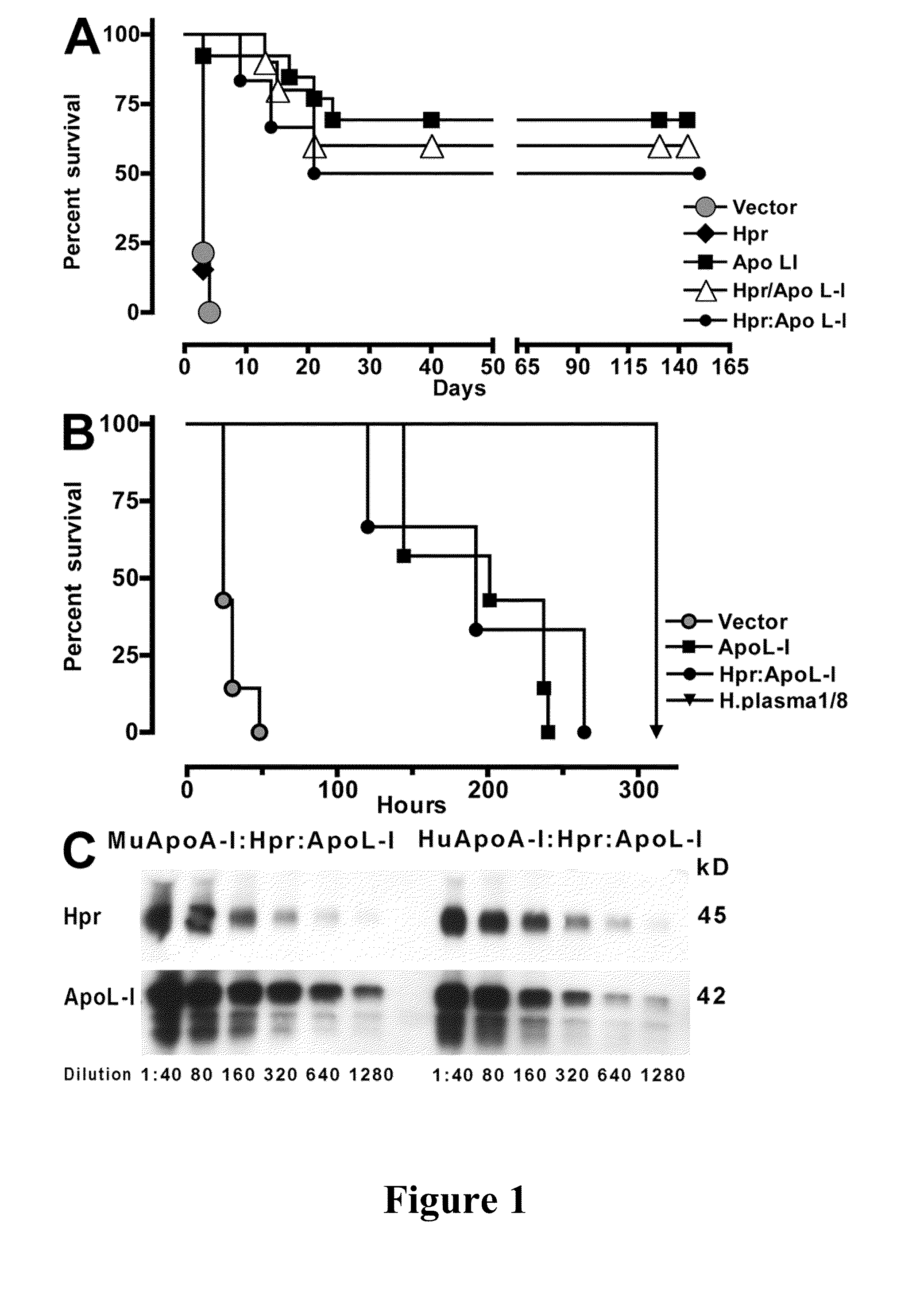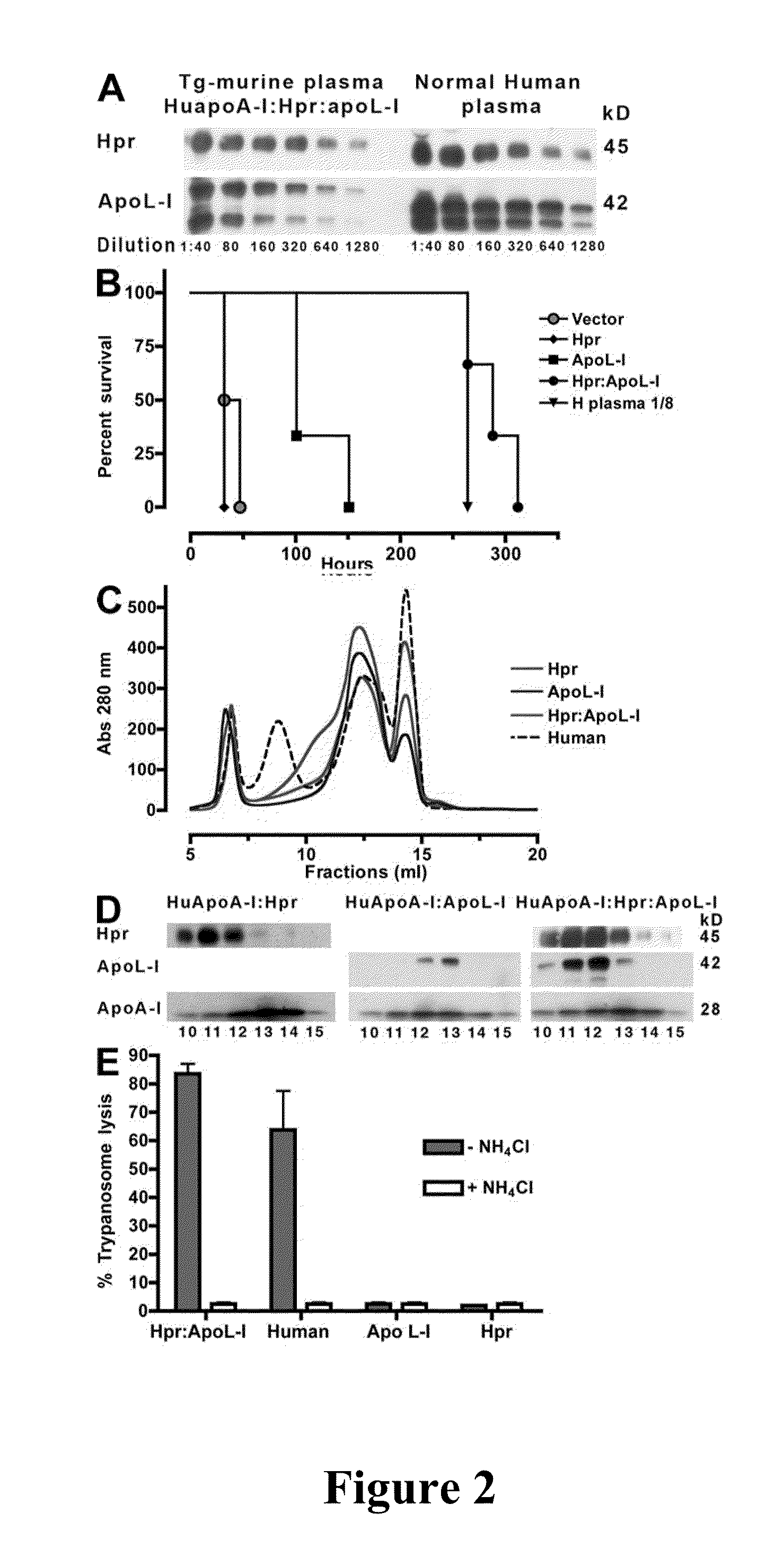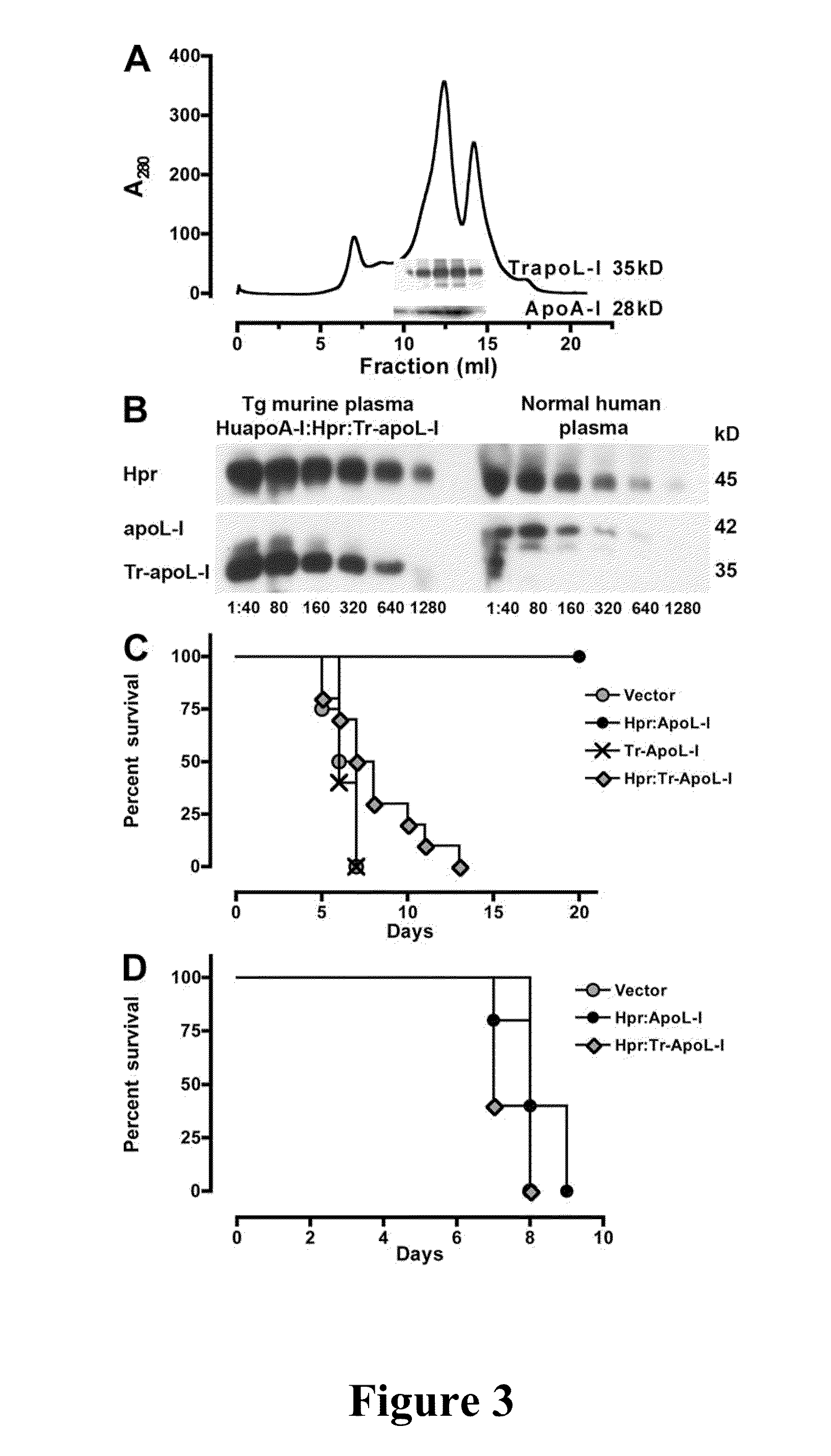Trypanosome resistant non-human transgenic animal
- Summary
- Abstract
- Description
- Claims
- Application Information
AI Technical Summary
Benefits of technology
Problems solved by technology
Method used
Image
Examples
example 1
Cloning and Expression of Apolipoprotein L-I and Haptoglobin-Related Protein in Individual Plasmids and Together in One Plasmid
[0083]pRG977 plasmid was obtained from Regeneron Pharmaceuticals, Inc. Human haptoglobin-related protein encoding the full-length signal peptide (GenBank Accession No. NM—020995) was cloned into pRG977 plasmid. A Kozac sequence CCACC was introduced by site-directed mutagenesis (Stratagene; P1).
[0084]A TopoTA-PCR product of apolipoprotein L-I from human liver (GenBank Accession No. O14791) was cloned into pRG977 plasmid (P2). The DNA sequence encoding the full-length signal peptide of apoL-I and a Kozac sequence CCACC was introduced by PCR amplification with Pfu Ultra (Stratagene) and cloned into pRG977 (P3).
[0085]A dual construct containing apoL-I and Hpr (each with their own promotor, and poly[A] tail) was cloned into pRG977 (P5). Tr-apoL-I and Hpr:Tr-apoL-I was obtained by site-directed mutagenesis of full-length apoL-I, P3, or the dual construct P5 by int...
example 2
Transfection of Mice
[0086]Expression of human Hpr and ApoL-I in the plasma of mice was achieved by performing hydrodynamics-based transfection (Kobayashi, et al., “Hydrodynamics-based Procedure Involves Transient Hyperpermeability in the Hepatic Cellular Membrane: Implication of a Nonspecific Process in Efficient Intracellular Gene Delivery,”J. Gene Med. 6:584-592 (2004), which is hereby incorporated by reference in its entirety). Male Swiss Webster mice (20 g) were injected i.v., in less than 10 s, with 2 ml of sterile 0.9% NaCl solution containing 50-100 μg of plasmids. For expression of apoL-I, Hpr, or both in HDL particles containing human apoA-I, high-volume injections were performed in C57BL / 6-Tg(APOA1)1Rub / J (The Jackson Laboratory). Control mice were C57BL / 6, which express murine apoA-I. 3 d after injections and every other day thereafter blood samples (20 μl) were taken from the animals via tail bleeds for evaluation of secreted human proteins.
example 3
Purification of Lipoproteins
[0087]HDL was purified from the plasma of two mice by adjusting the density to 1.25 g / ml with KBr and centrifuged for 16 h at 49,000 rpm at 10° C. in NVTi65 rotor. The lipoprotein fractions were collected, concentrated, and fractionated on a Superdex 200 HR 10 / 30 column (GE Healthcare) (Lugli, et al., “Characterization of Primate Trypanosome Lytic Factors,”Mol. Biochem. Parasitol. 138:9-20 (2004), which is hereby incorporated by reference in its entirety).
PUM
| Property | Measurement | Unit |
|---|---|---|
| Mass | aaaaa | aaaaa |
| Mass | aaaaa | aaaaa |
| Mass | aaaaa | aaaaa |
Abstract
Description
Claims
Application Information
 Login to View More
Login to View More - R&D
- Intellectual Property
- Life Sciences
- Materials
- Tech Scout
- Unparalleled Data Quality
- Higher Quality Content
- 60% Fewer Hallucinations
Browse by: Latest US Patents, China's latest patents, Technical Efficacy Thesaurus, Application Domain, Technology Topic, Popular Technical Reports.
© 2025 PatSnap. All rights reserved.Legal|Privacy policy|Modern Slavery Act Transparency Statement|Sitemap|About US| Contact US: help@patsnap.com



